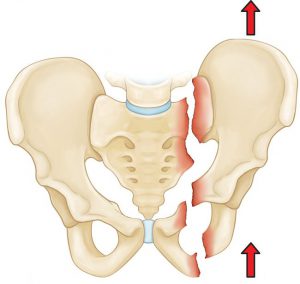The term pelvis refers to the round and solid bones situated at the bottom of the spine. Pelvis holds plenty of nerves and blood vessels. Also, a section of the bowels, reproductive organs, and bladder are in the pelvis. Therefore, it is possible that other tissues, blood vessels or organs may suffer from damage in case of any pelvis fracture. Frequently, pelvis fractures occur due to suffering a serious impact such as traffic accidents. Pelvis fracture may cause a great deal of pain to the patients. This pain will only become more severe with each attempt to move the hip.
Additionally, in some cases, it is possible observe swelling or bruises around the aching area. Since such fractures are considered significant, physicians are required to intervene the case immediately. Before the surgery, x-ray scans should be reviewed to identify the location of the fracture.

How to Treat Pelvis Fractures?
As long as dislocation is out of the question, or concerns a minimal area, the first method of treatment will be surgery-free. For this purpose, the patient is advised to not lift too much weigh and avoid heavily relying on his/her leg. On the other hand, the patient may be required to use a wheelchair if the fracture penetrates both legs. Since inflammation is expected, antibiotics will be prescribed to the patient
in addition to blood thinners – for protection against the risk of blood clotting. In case of multiple pelvis fractures, or if a single fracture damages the tissues, the patient must be taken into operation, as soon as possible. In that case, external fixation method may be used to stabilize the pelvis muscles. During the practice of this method, metal pins or screws are mounted in the muscles by using micro incisions.
By open reduction and internal fixation method, the bones are quickly placed onto their respective locations; and then, ensues the alignment process. Finally, the external surface of the bone will be mounted with a screw. During the post-operation phase of pelvis fracture surgeries, several complications may be expected. Among those complications are conditions such as infection risks and late recovery of the wounds. Also, the risk of damaging nerves, or blood vessels, or blood clothing always persists. For minimizing the risk, we use navigation technology at the clinic.




